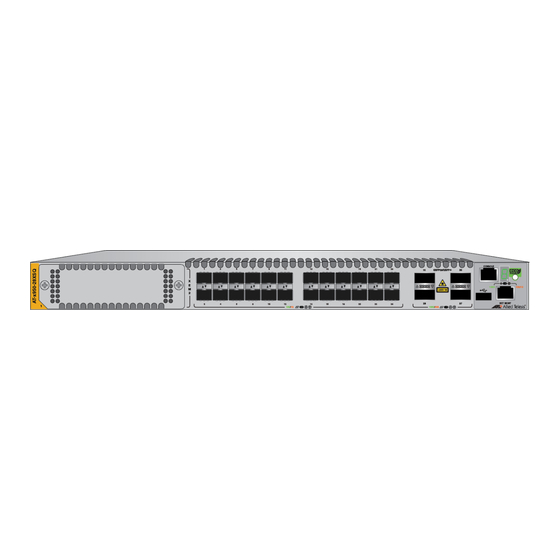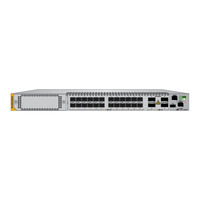
User Manuals: Allied Telesis AT-x950-28XSQ Switch
Manuals and User Guides for Allied Telesis AT-x950-28XSQ Switch. We have 2 Allied Telesis AT-x950-28XSQ Switch manuals available for free PDF download: Installation Manual
Allied Telesis AT-x950-28XSQ Installation Manual (190 pages)
Virtual Chassis Stacking.
Advanced Layer 3+ Switch
Brand: Allied Telesis
|
Category: Switch
|
Size: 5.05 MB
Table of Contents
-
Preface
13 -
-
-
Overview48
-
Stack Trunks50
-
-
-
-
-
-
-
Introduction120
-
Command Summary121
-
Stackport122
-
Stack Enable122
-
Stack Priority122
-
Stack Renumber123
-
Switch Provision123
-
-
What to Do Next142
-
-
-
-
-
Certifications187
Advertisement
Allied Telesis AT-x950-28XSQ Installation Manual (166 pages)
Advanced Layer 3+ Stand-alone Switches
Brand: Allied Telesis
|
Category: Switch
|
Size: 4.39 MB
Table of Contents
-
Preface11
-
-
Features18
-
Leds21
-
Leds23
-
Leds25
-
RJ-45 Ports30
-
Leds31
-
Transceivers34
-
Leds35
-
Transceivers36
-
Leds36
-
Transceivers38
-
Leds38
-
USB Port40
-
Leds47
-
-
-
-
-
-
-
-
-
Certifications164
Advertisement
Related Products
- Allied Telesis AT-x950-28XTQm
- Allied Telesis AT-x900-12XT/S
- Allied Telesis AT-x900-48FE
- Allied Telesis AT-x900-48FS
- Allied Telesis AT-X900-24XS
- Allied Telesis AT-X900-24XT
- Allied Telesis AT-X900-24XT-N
- Allied Telesis AT-x900-48FE-N
- Allied Telesis Switchblade AT-x900-12
- Allied Telesis Switchblade AT-x900-24

